Conventional single-mode laser diodes are semiconductor lasers and usually operate on one favored longitudinal mode. However, the semiconductor laser material exhibits a temperature dependency, which alters the gain profile and refractive index so that the diode jumps between different longitudinal modes.
This mode hopping causes the output wavelength to jump rapidly by a few picometers. For single-mode diodes that are not stabilized, the output power can change erratically by as much as 3%. This is not relevant for many applications but is relevant for some applications.
Power noise and mode hopping are eliminated in the low noise laser diode module LNC-series because an internal RF-modulation excited numerous longitudinal modes of emission. This simultaneously lowers signal noise significantly, to typ. < 0.15 % of Po (RMS, Bandwidth < 1 MHz)). Po is the maximum specified output power. Some diodes even have a noise of typ. < 0.1 % of Po (RMS, Bandwidth < 1 MHz).
This induced broadening of the spectrum, in a controlled and stable way, has the added advantage of considerably reducing the coherence length of the laser beam which. In some cases this can also reduce laser speckle contrast and prevent interference patterns.
LNC Laser Modules

- Low noise laser module (typ. < 0.15 % of Po (RMS, Bandwidth < 1 MHz))
- Reduced coherence
- Mode hopping free laser operation
Conventional single-mode Laser Modules vs. LNC Laser Modules
Low Noise
The noise profiles (bandwidth of 1MHz, period of 60 minutes) of a conventional single-mode laser and a LNC laser are compared. Peak noise values exceed 1 % for a standard laser diode while the RF-modulation of the low noise laser diode module reduces noise to typ. < 0.15 % of Po (RMS), Po is the maximum specified output power.
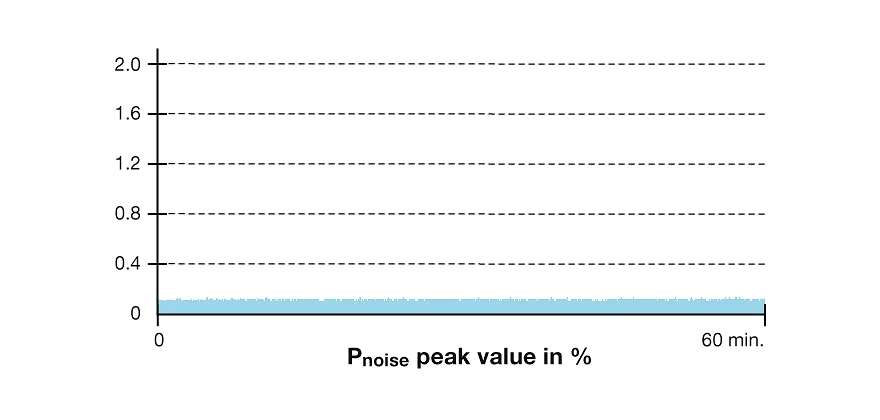
LNC Laser
The RF-modulation results in a constant mean laser power.
Power noise (typ. < 0.15 % of Po (RMS, Bandwidth < 1 MHz)).
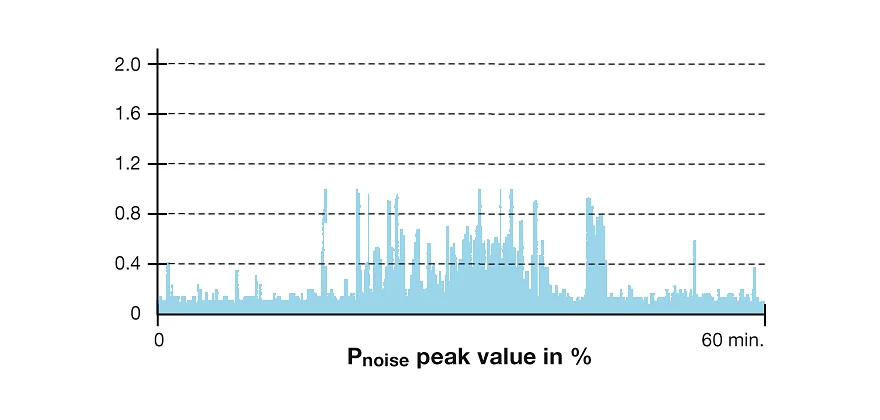
Standard laser
Power noise from a laser diode module.
Mode hopping increases the power noise.
No Mode Hopping
Without RF-modulation, the laser jumps stochastically between several emitting modes. Using RF-modulation, numerous modes are excited within the gain profile of the resonator, producing a broad spectrum with about 1.5 nm FWHM (full-width at half-maximum).
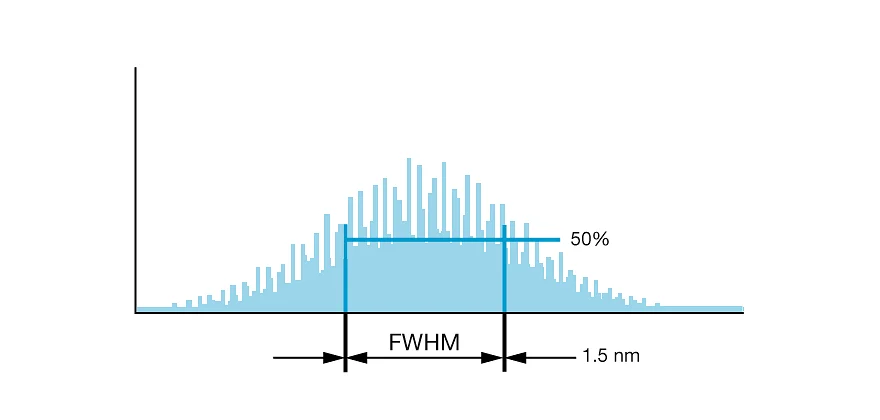
LNC Laser
Broadened spectrum (~1.5 nm FWHM) with reduced coherence length (approximately 0.3 mm) as a result of using RF-modulation.
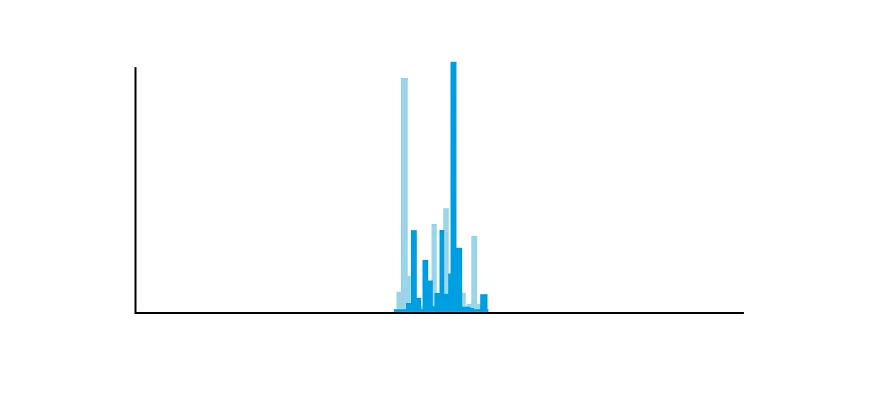
Standard laser
Mode hopping: temporal jumps between modes. The short-term coherence of individual modes is >1 m, but effective coherence length is smaller.
Laser Speckle
- Line width/spot size
- Size of the aperture of the optics
- Measurement geometry
- For thicker laser lines and larger laser spots when using a fully coherent (standard) laser source, the laser speckle contrast is 1 and there are areas of zero intensity within a laser spot. For a LNC laser source the emission from multiple laser modes results in a reduced coherence length (approximately < 300 μm), and the speckle contrast and size are also less.
- For thinner laser lines and smaller laser spots this benefit is less relevant and there might be little to no difference in speckle behaviour.
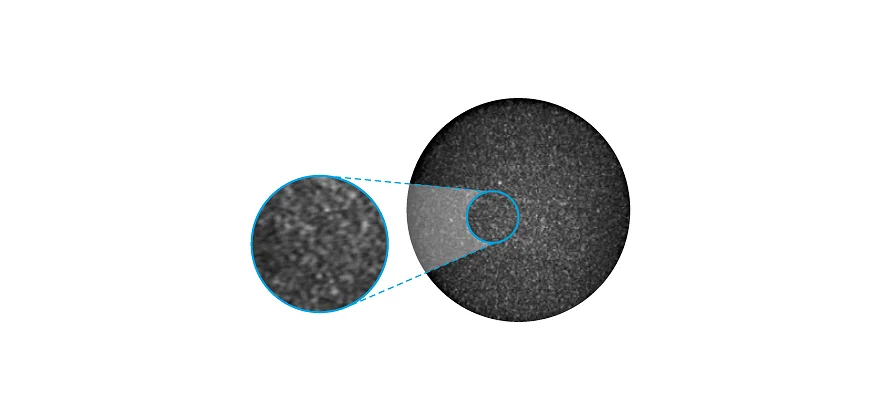
LNC Laser
Low speckle contrast due to reduced coherence length in a large laser spot. Note that speckle contrast and size generally depend on factors such as spot size and the aperture of the optics.
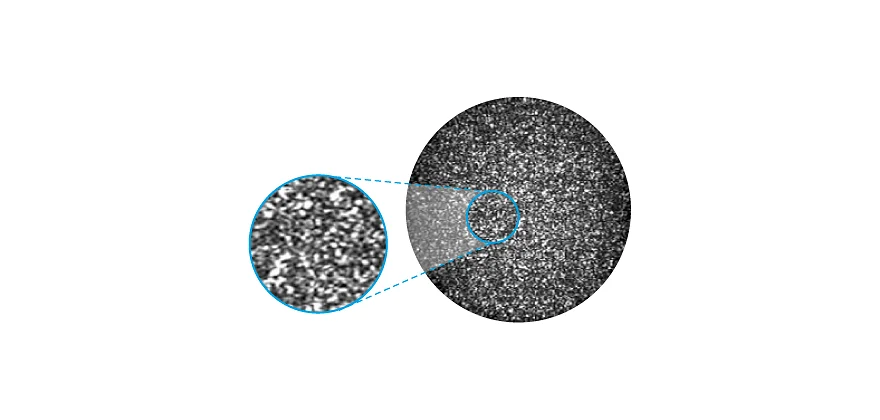
Standard laser
A standard laser diode module produces a large laser spot with speckle. Note that speckle contrast and size generally depend on factors such as spot size and the aperture of the optics.
Less Interference
Another effect of a reduced coherence length can be observed is less interference effects. The image of a collimated laser beam reveals a disturbing interference pattern when using a standard laser diode, as a result of internal reflection within the protective glass window of the detector in a CCD area scan camera.
Since the coherence length of a low noise laser diode module is less than the thickness of the glass the interference is eliminated.
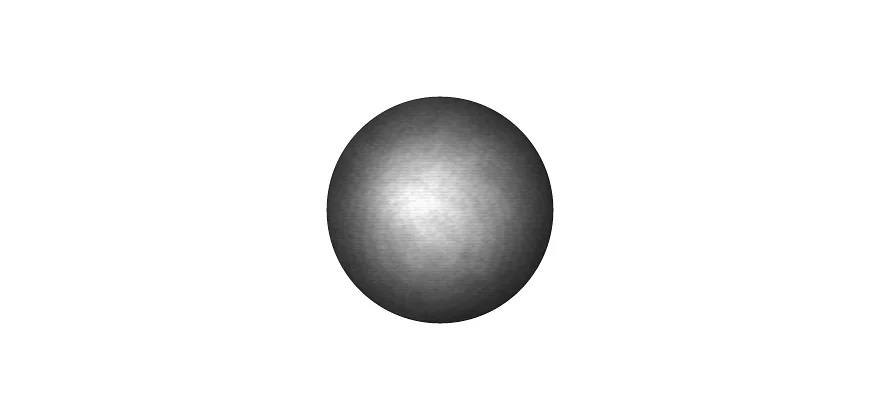
LNC Laser
Intensity distribution of a laser spot at a camera sensor. No interference patterns, despite the camera sensor protection window.
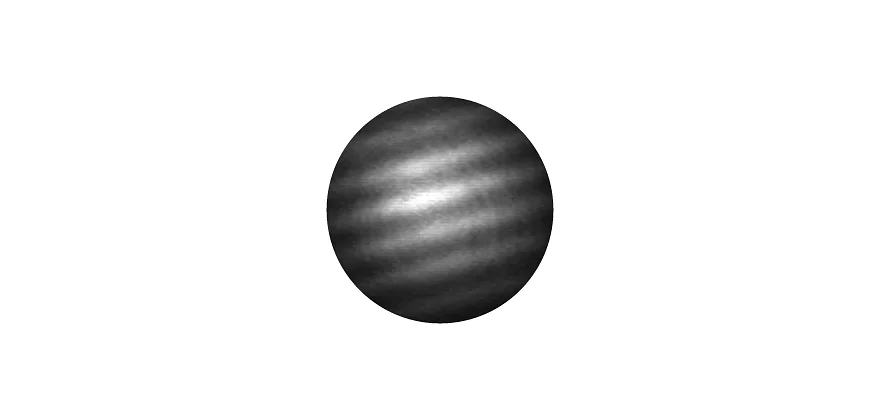
Standard laser
The laser spot recorded directly using a camera sensor, with its protection window generating a disturbing pattern of interference.